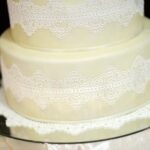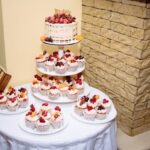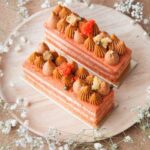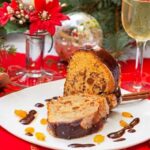When it comes to Easter, one of the most delightful and festive activities is decorating an Easter cake. Whether you are an accomplished baker or just starting out, creating a beautifully decorated cake for this special occasion can be a wonderful way to celebrate the holiday season. Easter cakes have long been a symbol of celebration, renewal, and joy, making them the perfect centerpiece for any gathering or event during this time of year.
The process of decorating an Easter cake begins with gathering the essential tools and materials. From cake stands and piping bags to spatulas and icing tips, having the right equipment is crucial in achieving professional-looking results. Additionally, using high-quality ingredients and vibrant colors for icing and decorations is key to enhancing the visual appeal of your cake.
Choosing the perfect design and theme for your Easter cake is another important aspect of the decoration process. Traditional symbols like bunnies, eggs, flowers, and crosses are popular choices, but the options are endless. Your design should not only reflect your personal preferences but also consider factors such as skill level and the occasion for which you are baking.
In this article, we will guide you through each step of decorating an Easter cake, providing expert tips on gathering essentials, selecting designs, baking delicious recipes, coloring icing flawlessly, mastering piping techniques, adding edible decorations creatively, applying final touches with finesse, and presenting your masterpiece with style.
By following our advice and incorporating your own unique twists along the way, you will soon master the art of decorating these sweet treats that bring joy to all who indulge in them during Easter festivities.
So let’s put on our aprons and get ready to create beautiful and delicious Easter cakes.
Gathering the Essentials
| Tools | Materials |
|---|---|
| Cake stands | Icing colors |
| Piping bags | Fondant or marzipan |
| Spatulas | Chocolate eggs or candies |
| Icing tips (various shapes and sizes) | Sprinkles in Easter colors |
Having a sturdy cake stand is essential for displaying your decorated Easter cake. It not only provides a stable base but also makes it easier to rotate the cake while icing and decorating. Piping bags are necessary for creating beautiful designs on your cake, and spatulas help with spreading and smoothing icing.
The various types of icing tips available allow you to achieve different effects, such as creating borders, writing messages, or making intricate designs. Make sure to have a variety of shapes and sizes to suit your desired decorations.
In addition to tools, high-quality ingredients are crucial for achieving vibrant colors and delicious flavors. Invest in good quality food coloring gels or liquid food coloring to tint your icing. If you prefer natural alternatives, consider using fruit juices or vegetable-based powders to achieve pastel shades.
Lastly, consider adding edible decorations like fondant or marzipan flowers, chocolate eggs, sugar butterflies, or sprinkles in Easter colors to elevate your cake design. These decorations not only add visual appeal but also enhance the overall taste and texture of the cake.
By gathering the essentials and having the right tools and materials, you’ll be well-prepared to embark on your Easter cake decorating adventure. This will ensure that you have a successful and enjoyable experience, resulting in a beautiful and delicious centerpiece for your Easter celebrations.
Design and Theme Selection
When it comes to decorating an Easter cake, the design and theme play a crucial role in creating a visually appealing and festive centerpiece. There are endless possibilities for Easter cake designs, from traditional symbols like bunnies and eggs to vibrant spring flowers and religious crosses. In this section, we will explore different design options and provide tips on choosing the perfect Easter cake design for any occasion.
- Traditional Symbols: One of the most popular choices for Easter cakes is incorporating traditional symbols like bunnies, eggs, chicks, or butterflies. These designs embody the spirit of Easter and add a playful touch to your cake. Consider using fondant or marzipan to create three-dimensional figures that can be placed on top of the cake or used as decorations around the sides.
- Spring Flowers: Another beautiful option for an Easter cake design is showcasing vibrant spring flowers. Choose edible flower decorations made from gum paste or fondant to create a stunning floral arrangement atop your cake. Incorporate pastel hues such as pink, yellow, and lavender to capture the essence of springtime.
- Religiously Inspired Designs: For those seeking a more religiously themed cake design, consider incorporating crosses or other religious symbols. You can use royal icing or buttercream to pipe delicate cross designs onto your cake or opt for edible wafer paper crosses for an elegant touch.
Choosing the perfect Easter cake design depends on personal preferences, skill level, and the occasion itself. If you are hosting a family gathering or children’s party, whimsical designs with bunnies or playful animals may be ideal. For a more formal event, opt for elegant floral arrangements or religiously inspired designs that reflect the significance of Easter.
Remember that regardless of which design you choose, practicing patience is key. Experiment with different techniques and have fun adding your own unique twist to make your Easter cake truly one-of-a-kind.
Baking and Preparing the Cake
When it comes to decorating an Easter cake, a delicious and moist cake is the foundation for a successful creation. Here, we will share a tried-and-true Easter cake recipe that is sure to impress your family and friends. This recipe can be easily customized with unique ingredients and techniques to enhance the festive aspect of your cake.
Easter cakes often feature bright colors and whimsical designs, making them both visually appealing and delicious. To prepare the cake, you will need to follow some essential techniques to ensure a stable base for decoration. Firstly, make sure to properly level your cake layers to create an even surface for icing.
This can be done using a long serrated knife or a leveling tool. Once leveled, you can torte your cake by carefully slicing each layer in half horizontally. This technique allows for fillings or frosting between each layer, adding flavor and moisture.
To add stability to your cake layers and prevent sliding or collapsing, it is important to fill them with the appropriate amount of filling or frosting. The filling not only adds taste but also acts as glue between the layers. Spread a thin layer of filling on top of each layer before stacking them together and applying even pressure.
Now that you have prepared the foundation of your Easter cake, it’s time for the fun part – decorating. But before diving into decorations, ensure that your cake has completely cooled down. A warm or hot surface can cause frosting or icing to melt or become runny. For additional stability while decorating, consider chilling your cake in the fridge for about 20 minutes prior to starting.
Now you are ready to let your creativity shine by adding vibrant colors and beautiful designs to your Easter cake.
Coloring and Tinting Icing
Coloring and tinting icing is an essential step in enhancing the visual appeal of your Easter cake. Vibrant colors are synonymous with Easter, so it’s crucial to choose the right coloring method and achieve the perfect shades for your cake. There are several methods and techniques you can use to achieve vibrant icing colors that will make your Easter cake truly stand out.
One popular method for coloring icing is to use food coloring gels. These gels come in a wide range of colors and are highly concentrated, allowing you to achieve intense shades without altering the consistency of the icing. Start by adding a small amount of gel color to your icing, and gradually increase until you reach the desired hue. Remember to mix colors carefully to avoid ending up with muddy or unappealing tones.
Liquid food coloring is another common option for tinting icing. However, it’s important to note that liquid food coloring can sometimes dilute the icing, causing it to become runny or affecting its texture. To avoid this issue, start with a thicker consistency of icing and add liquid food coloring drop by drop until you reach the desired color intensity.
If you prefer using natural alternatives for coloring your icing, consider using fruit juices or vegetable-based powders. These options not only provide vibrant colors but also add a unique flavor profile to your cake. For example, beet juice can create a beautiful pink shade, while spinach powder can give a lovely green color. Experimentation is key when using natural alternatives, as different ingredients may require specific measurements or combinations.
When tinting icing for an Easter cake design, pastel shades are often sought after because they evoke springtime and new beginnings. Achieving these soft colors can be done by starting with a base white or pale-colored icing and adding very small amounts of gel or liquid food coloring until you achieve your desired pastel shade. Remember to mix well to ensure even distribution of color throughout the icing.
Piping Techniques
Introduction to Piping Techniques
Piping techniques are essential for creating beautiful designs and patterns on your Easter cake. Whether you’re a beginner or an experienced baker, mastering these techniques will elevate your cake decoration skills and impress your family and friends. In this section, we will explore various piping techniques that you can use to create intricate details and stunning designs on your Easter cake.
Choosing the Right Icing Consistency
Before diving into specific piping techniques, it’s important to understand the different consistencies of icing and how they affect the outcome of your design. There are three main types of icing consistencies: stiff consistency, medium consistency, and thin consistency.
Stiff consistency icing is used for creating outlines, borders, and intricate details with sharp edges. It holds its shape well and is ideal for creating dimension on your cake. Medium consistency icing is slightly softer than stiff consistency icing and is perfect for filling in larger areas and creating smooth surfaces. Thin consistency icing is used for creating delicate designs like lace or fine lines.
Piping Tips and Techniques
There are numerous piping tips available in different shapes and sizes, each producing a unique design or pattern. Here are some popular tips commonly used for Easter cake decoration:
- Round Tip (Nozzle): This versatile tip is perfect for creating dots, beads, lettering, and outlines. It comes in various sizes to achieve different effects.
- Star Tip (Nozzle): The star tip creates beautiful rosettes, shells, zigzags, ruffles, stars, and piped borders. It adds texture and volume to your cake design.
- Leaf Tip (Nozzle): With its unique shape resembling a leaf, this tip is great for piping leaves, feathers, vines, or stems on floral designs.
- Petal Tip (Nozzle): The petal tip helps you create intricate flower petals, ruffles, and bows. It is essential for creating realistic floral designs on your Easter cake.
To pipe designs using these tips, fill a piping bag with the desired icing and twist the open end to push the icing through the tip. Practice on a separate surface before working directly on your cake to perfect your technique and get a feel for how the icing flows.
Remember to apply consistent pressure while piping, using controlled movements to achieve smooth lines or defined shapes. If you make a mistake, simply scrape off the icing and start again. With practice, you’ll become more comfortable and confident in creating beautiful designs on your Easter cake.
By mastering different piping techniques, you can turn a plain cake into a stunning centerpiece that will delight everyone during your Easter celebration. Let your creativity flow and experiment with different combinations of tips and designs to create unique cakes that reflect your personal style and add joy to this festive season.
Adding Decorations
Decorating an Easter cake is not only about icing and piping techniques – it’s also an opportunity to let your creativity shine by adding beautiful and edible decorations. These decorations can elevate your Easter cake to the next level and make it a true centerpiece for your holiday celebration. Whether you prefer fondant flowers, chocolate eggs, or sugar butterflies, there are endless possibilities for decorating your Easter cake.
One popular option for adding decorations to an Easter cake is using fondant or marzipan. These pliable materials can be shaped into various designs, such as flowers, leaves, or even miniature figures. Fondant and marzipan decorations are not only visually appealing but can also add a delicious flavor element to your cake. You can create intricate details with these decorations or keep them simple and elegant, depending on your personal style and skill level.
Another way to enhance your Easter cake is by incorporating chocolate eggs. Chocolate eggs are synonymous with the holiday season and can be made in different sizes and flavors. Whether you choose milk chocolate, dark chocolate, or white chocolate, these eggs can be placed strategically around the edges of the cake or arranged in a cascading pattern on top for a stunning effect.
In addition to fondant flowers and chocolate eggs, you can also use other edible decorations like sugar butterflies or sprinkles in vibrant Easter colors. Sugar butterflies add a whimsical touch to any cake design and can be easily attached using icing or toothpicks. Sprinkles in pastel shades give an instant festive look to your Easter cake and are a simple yet effective way to embellish it.
To ensure that your decorations are placed properly and create a visually balanced design, consider arranging them thoughtfully on the cake before securing them with icing or edible glue. Pay attention to spacing between decorations and try different arrangements until you find one that suits your aesthetic vision.
In summary, adding decorations to your Easter cake can take it from ordinary to extraordinary. Whether you choose fondant flowers, chocolate eggs, sugar butterflies, or sprinkles, these decorations add visual appeal and enhance the overall festive ambiance of your cake. Get creative, experiment with different combinations, and have fun elevating your Easter cake to the next level of beauty and deliciousness.
| Decorations | Description |
|---|---|
| Fondant or Marzipan Flowers | Pliable materials that can be shaped into various designs such as flowers or leaves; adds visual appeal and flavor element. |
| Chocolate Eggs | Eggs made of milk chocolate, dark chocolate, or white chocolate; can be strategically placed or arranged on top for a stunning effect. |
| Sugar Butterflies | Easily attachable edible decorations that add whimsy to any cake design. |
| Sprinkles in Easter Colors | Pastel-colored sprinkles that give an instant festive look to an Easter cake. |
Final Touches and Serving Suggestions
Adding a Smooth and Glossy Finish
To present your Easter cake in the most visually appealing way, it is important to give it a smooth and glossy finish. One popular technique for achieving this is called “crumb coating.” Start by applying a thin layer of icing all over the cake to seal in any loose crumbs.
Once the crumb coat has set, use a spatula to apply a thicker layer of icing evenly across the cake, making sure to smooth out any imperfections. For an extra glossy finish, you can use a hot knife to gently melt the icing on the surface of the cake.
Garnishing with Fresh Herbs or Fruit
Adding fresh herbs or fruit can be a delightful way to enhance both the visual appeal and flavor of your Easter cake. For example, you can decorate around the base of your cake with fresh mint leaves or rosemary sprigs for a touch of greenery.
Alternatively, consider topping your cake with raspberries, blueberries, or slices of citrus fruits for vibrant pops of color. Not only will these additions make your cake look more enticing, but they will also provide a refreshing contrast to the sweetness.
Personalized Details and Messages
To add a personal touch to your Easter cake, consider incorporating personalized details or messages. You can do this by using letter-shaped cookie cutters to create fondant or marzipan initials or names that can be placed on top of the cake.
Another option is to write special messages directly onto the cake using colored icing pens. Whether it’s a heartfelt message for loved ones or simply wishing everyone a “Happy Easter,” these personalized touches will make your cake even more meaningful.
Plating and Presentation
How you present your Easter cake can greatly impact its overall appeal. Consider using a beautiful cake stand or platter that complements the theme or colors of your cake. You can also add decorative elements such as pastel-colored tablecloths or Easter-themed napkins to create a cohesive look. Additionally, think about the placement of the cake in relation to other desserts or decorations on the table to ensure it is showcased as a centerpiece.
When it comes time to serve the cake, make sure you have the right utensils on hand. Use a sharp knife for clean and precise slices and provide individual dessert forks or cake servers for guests to enjoy. Remember to take into account any dietary restrictions or allergies among your guests and have alternatives available if needed.
By paying attention to these final touches and serving suggestions, you can take your Easter cake from delicious to visually stunning and create a memorable experience for everyone enjoying it.
Conclusion
In conclusion, decorating an Easter cake can be a fun and festive activity that adds to the joy of the holiday season. Throughout this blog post, we have explored the essential tools and materials needed for Easter cake decoration, discussed various design options, shared a delicious recipe, and provided tips for achieving vibrant colors and creating beautiful designs.
Mastering the art of decorating Easter cakes requires creativity, patience, and practice. It is important to remember that every cake is an opportunity for self-expression and experimentation. Don’t be afraid to make your own unique twists and add personal touches to your creations. Let your imagination run wild.
Above all, enjoy the process of creating beautiful and delicious Easter cakes. The joy that comes from seeing your masterpiece come to life and sharing it with loved ones is truly priceless. So gather your tools, gather your ingredients, and let the decorating begin. Happy Easter.

Welcome to my blog about home and family. This blog is a place where I will share my thoughts, ideas, and experiences related to these important topics. I am a stay-at-home mom with two young children. I hope you enjoy reading it! and may find some helpful tips and ideas that will make your home and family life even better!





